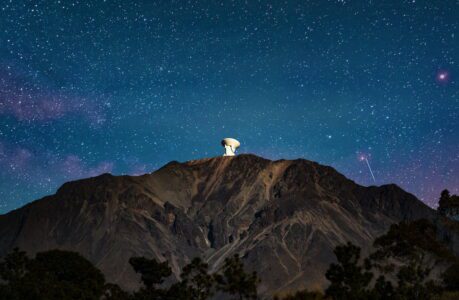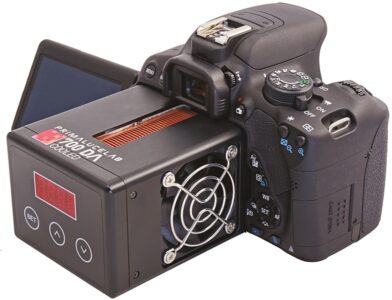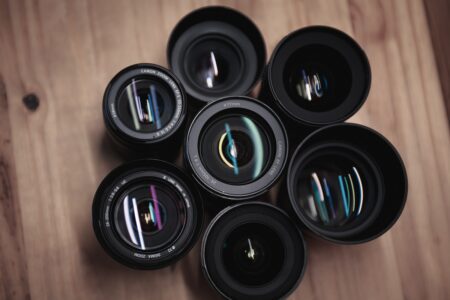If you are passionate about astronomy and want to take your hobby to the next level, you may be considering purchasing equipment for amateur astronomy. With so many different types of telescopes, mounts, and accessories available, it can be overwhelming to know where to start. This guide will give you an overview of the most common equipment used for amateur astronomy and help you choose the right gear for your needs and budget.
Telescopes are the most essential piece of amateur astronomy equipment. They come in many shapes and sizes, ranging from small portable models to large stationary telescopes that require a permanent setup. Refracting telescopes use lenses to gather light and are perfect for observing bright objects like the moon and planets. Reflecting telescopes use mirrors to gather light and are better suited for observing faint deep-sky objects like galaxies and nebulae. Compound telescopes, also known as catadioptric telescopes, use both lenses and mirrors and are a great compromise between refractors and reflectors.
Mounts are another crucial component of an amateur astronomer’s setup. A mount keeps the telescope steady and allows for precise tracking of celestial objects. Altazimuth mounts are the simplest and most affordable option, but they can be difficult to use for long-exposure astrophotography. Equatorial mounts are more complicated but offer better tracking and are essential for astrophotography.
Accessories like eyepieces, filters, and finderscopes can enhance your observing experience and help you see more detail in celestial objects. Eyepieces come in different magnifications and field of views, and having a range of eyepieces can be useful for different observing scenarios. Filters can block out light pollution and enhance the contrast of certain objects, while finderscopes can help you locate objects quickly and easily.
When choosing amateur astronomy equipment, it’s important to consider your budget, observing location, and observing goals. A portable setup may be better suited for those who travel frequently or have limited space, while a permanent setup may be ideal for those who have a dedicated observing location. If you’re interested in astrophotography, investing in a good quality mount and camera will be essential.
In conclusion, amateur astronomy equipment can be a significant investment, but it can also be incredibly rewarding. By choosing the right gear for your needs and budget, you can explore the wonders of the universe and gain a deeper understanding of our place in the cosmos.
Binoculars for astronomy
Binoculars can be a great alternative or addition to telescopes for amateur astronomy. They offer a wide field of view and are portable, making them a convenient option for stargazing on the go.
When selecting binoculars for astronomy, there are a few key factors to consider. The first is the aperture, which refers to the diameter of the objective lens. A larger aperture will gather more light and result in brighter, clearer images. However, larger apertures also mean heavier binoculars, so it’s important to find a balance between aperture and portability.
The second factor to consider is the magnification. Higher magnification may seem like a good thing, but it can also result in a narrower field of view and shakier images due to the increased sensitivity to hand shake. A magnification between 7x and 10x is generally recommended for astronomy.
Another important consideration is the prism type. Porro prisms offer better image quality but are less compact, while roof prisms are more compact but may sacrifice some image quality.
Lastly, it’s important to consider the quality of the optics and coatings. High-quality optics and coatings can result in sharper and clearer images, but they also come with a higher price tag.
Overall, binoculars can be a great option for beginners or those who prefer a more portable setup. They are also a great complement to telescopes, allowing for wider views of the night sky. When selecting binoculars for astronomy, it’s important to consider aperture, magnification, prism type, and optical quality to find the right balance between performance and portability.
Cameras for amateur astronomy
Cameras can be a powerful tool for amateur astronomers, allowing them to capture stunning images of celestial objects and share their observations with others. There are several types of cameras used in amateur astronomy, each with its own advantages and disadvantages.
One of the most common types of cameras used in amateur astronomy is the DSLR (digital single-lens reflex) camera. DSLR cameras are versatile and can be used for both astrophotography and regular photography. They offer a range of manual settings and can be paired with different lenses to achieve different focal lengths and fields of view. However, they can be expensive and require some knowledge of photography to use effectively.
Another popular option for astrophotography is the dedicated astronomical camera. These cameras are designed specifically for low-light conditions and long exposures and often come with specialised software for image processing. They can produce high-quality images with low noise and are relatively easy to use compared to DSLRs. However, they can also be expensive and may require additional accessories like filters and adapters.
Webcams and planetary cameras are also commonly used in amateur astronomy. These cameras are designed for capturing video of planets and other bright objects in our solar system. They are relatively inexpensive and easy to use, and can produce high-resolution images with fast frame rates. However, they are not as versatile as DSLRs or dedicated astronomical cameras and are limited to capturing bright objects.
When selecting a camera for amateur astronomy, it’s important to consider your budget, observing goals, and level of experience. DSLRs are a good option for those who want a versatile camera for both astrophotography and regular photography, while dedicated astronomical cameras are a good option for those who want a specialised camera for astrophotography. Webcams and planetary cameras are a good option for those who want to capture high-resolution images of planets and other bright objects.
Overall, cameras can be a powerful tool for amateur astronomers, allowing them to capture stunning images of the night sky and share their observations with others. When selecting a camera, it’s important to consider your budget, observing goals, and level of experience to find the right camera for your needs. With the right camera and a bit of patience, you can capture breathtaking images of the wonders of the universe.
Astronomy software and apps
Astronomy software and apps can be a valuable tool for amateur astronomers, helping them to plan observations, locate celestial objects, and analyse data. Here are some popular options for astronomy software and apps:
- Stellarium – Stellarium is a free planetarium software that allows users to view a realistic 3D simulation of the night sky. It includes a database of over 600,000 stars, constellations, planets, and other celestial objects, and can be used to plan observations, simulate eclipses, and track the motion of objects across the sky.
- SkySafari – SkySafari is a mobile app that allows users to explore the night sky using their smartphone or tablet. It includes a database of over 120,000 stars, planets, galaxies, and other celestial objects, and can be used to locate objects in the sky, track their motion, and plan observations. SkySafari is available for both iOS and Android devices, and offers a range of features for different levels of astronomy experience.
- Aladin – Aladin is a free software developed by the French Centre de Données astronomiques de Strasbourg (CDS), which provides access to astronomical data from different sources such as sky surveys, catalogues and archives. It can be used to visualise and analyse data, and provides a range of tools for image processing, catalogue cross-matching, and more.
- Cartes du Ciel – Cartes du Ciel is a free open-source planetarium software that allows users to view a realistic 3D simulation of the night sky. It includes a database of over 1.5 million stars, galaxies, nebulae, and other celestial objects, and can be used to plan observations, simulate eclipses, and track the motion of objects across the sky.
- Astropy – Astropy is a free and open-source library of tools and resources for astronomers and astrophysicists. It includes modules for data analysis, coordinate systems and transformations, image processing, and more. Astropy is designed to be used with the Python programming language, and is widely used in the astronomy community for research and data analysis.
Whether you’re a beginner or an experienced amateur astronomer, astronomy software and apps can be a valuable tool for exploring the night sky and analysing data. By using these tools, you can enhance your observing experience and gain a deeper understanding of the universe around us.




